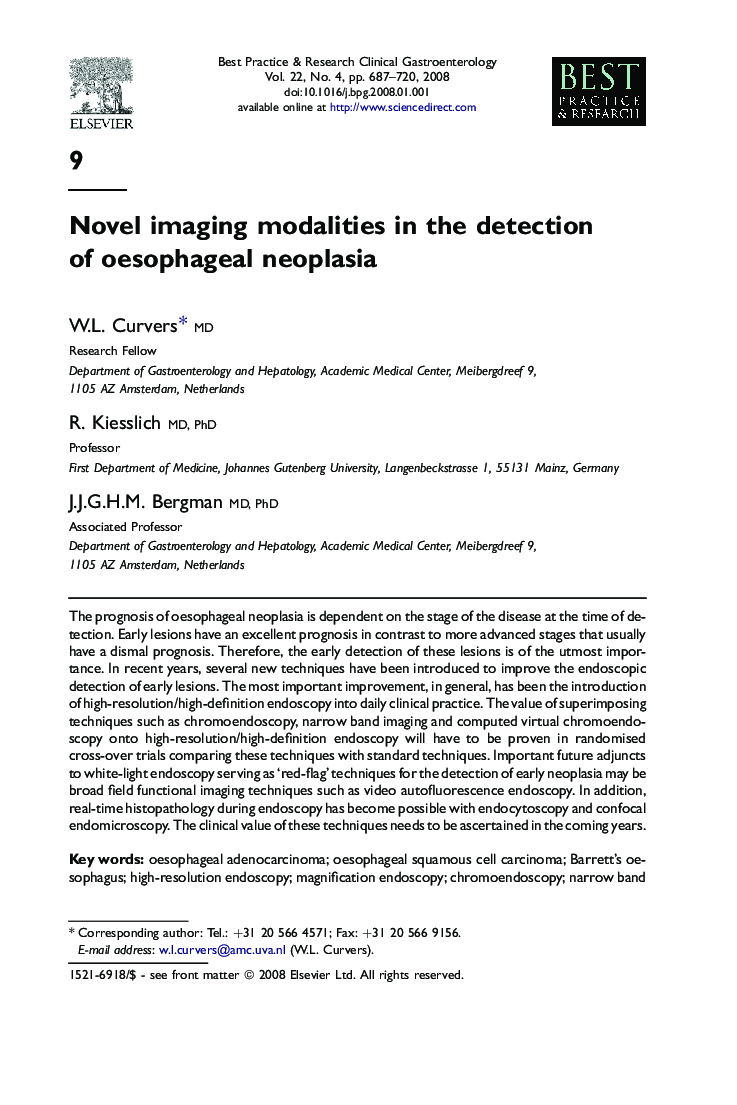| Article ID | Journal | Published Year | Pages | File Type |
|---|---|---|---|---|
| 3254681 | Best Practice & Research Clinical Gastroenterology | 2008 | 34 Pages |
The prognosis of oesophageal neoplasia is dependent on the stage of the disease at the time of detection. Early lesions have an excellent prognosis in contrast to more advanced stages that usually have a dismal prognosis. Therefore, the early detection of these lesions is of the utmost importance. In recent years, several new techniques have been introduced to improve the endoscopic detection of early lesions. The most important improvement, in general, has been the introduction of high-resolution/high-definition endoscopy into daily clinical practice. The value of superimposing techniques such as chromoendoscopy, narrow band imaging and computed virtual chromoendoscopy onto high-resolution/high-definition endoscopy will have to be proven in randomised cross-over trials comparing these techniques with standard techniques. Important future adjuncts to white-light endoscopy serving as ‘red-flag’ techniques for the detection of early neoplasia may be broad field functional imaging techniques such as video autofluorescence endoscopy. In addition, real-time histopathology during endoscopy has become possible with endocytoscopy and confocal endomicroscopy. The clinical value of these techniques needs to be ascertained in the coming years.
